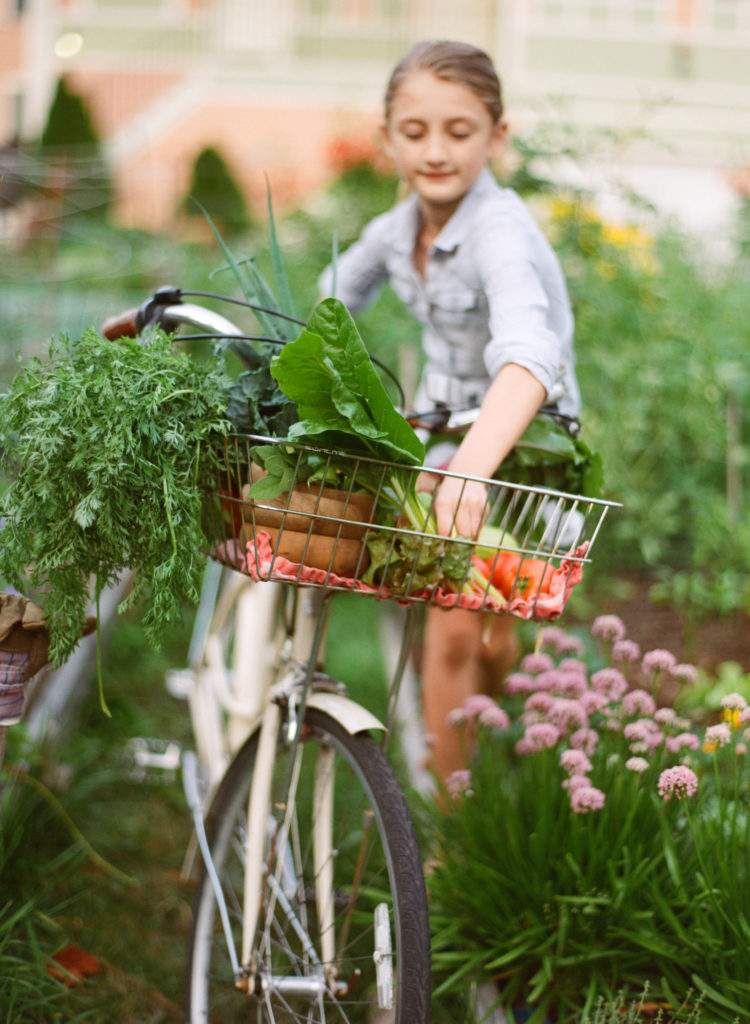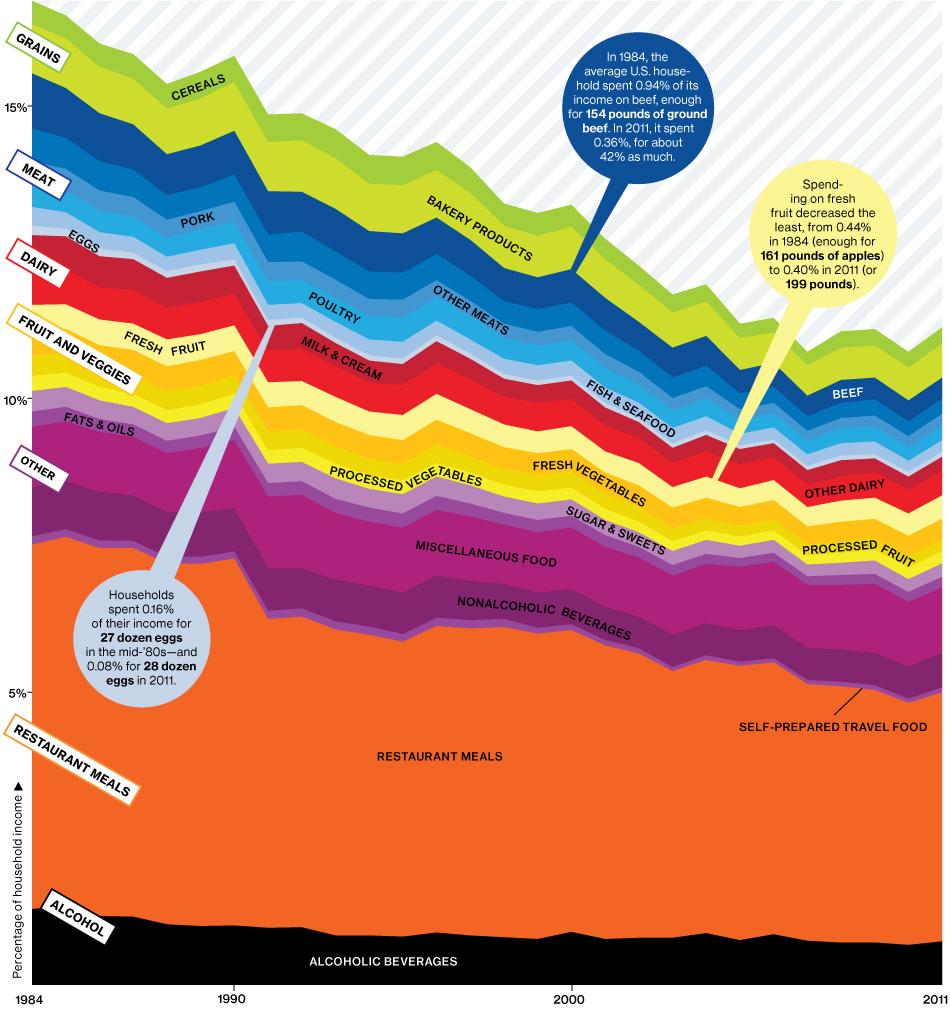I get that eating healthy can be expensive. When people ask me how I afford it, the first thing I say is that it’s important to reframe your thinking. Food isn’t just fuel; it can either improve or damage your health. It’s true that 100 calories of Twinkies are less expensive than 100 calories of grass-fed beef, but what else are you getting when you buy those Twinkies? The harmful effects of our industrial food system on our health (and on the environment) aren’t factored into the cost of processed food, making it seem cheaper, but investing in nutrient-dense food is cheaper in the long run when you consider what you’ll save on doctor visits, hospital stays, and medication for chronic illnesses like diabetes and heart disease—not to mention how much better you’ll feel right away.
“You, as a food buyer, have the distinct privilege of proactively participating in shaping the world your children will inherit.” —Joel Salatin

That being said, there are certainly ways to make the Paleo lifestyle more affordable. By carefully planning out your meals, using less-expensive cuts of high-quality meat, and growing whatever food you can at home, you can really cut down on your grocery expenses. You’ll also find that you tend to eat out less on Paleo, which saves money. I can have a fantastic restaurant-like experience at home for a much lower price tag, and unlike at a restaurant, I can be sure that I’m eating grass-fed, humanely raised meat; fresh, locally grown vegetables; and healthy oils. In the 1920s, less than 20 percent of each dollar spent on food was spent on “away-from-home” food. Today, that figure is almost 50 percent.
“In 1984, the average U.S. household spent 16.8 percent of its annual post-tax income on food. By 2011, Americans spent only 11.2 percent. The U.S. devotes less of its income to food than any other country—half as much as households in France and one-fourth of those in India.” —From “America’s Shrinking Grocery Bill,” Businessweek (image credit also Businessweek)
It’s also important to spend on our food money on real food. In a typical American grocery store, practically every aisle in the center of the store is filled with processed garbage that we don’t need to be eating. Cut back on packaged food and spend on whole ingredients instead.
There’s a bigger picture to think about here, too. To me, living within your means is part of a sustainable lifestyle. Do you really need that expensive car loan, the latest high-tech gadget, or those regular manicures? Are you working extra hours just to pay off that luxury vacation from two years ago? Managing your finances well makes it possible to live a more balanced, healthier lifestyle.

Here are my tips on how to save money and still eat great:
Have a plan Menu planning is a lost art. If you figure out ahead of time what you’ll be eating when, it’s much easier to economize and save money on your grocery bill.
Cook and buy in bulk It’s just as easy to roast multiple chickens as one, and with the oven already on, it’s simple to toss in a bunch of sweet potatoes. Is there a sale on your favorite olive oil? Stock up and save!
Make your own bone broth It’s the ultimate way to recycle a roast chicken or leg of lamb.
Grow your own food While having your own chickens might cost more, the quality of the eggs far surpasses what you’ll get at the grocery store, and a veggie patch is a great way to save money. Live in a city? Maybe you can have container vegetables on the rooftop or fire escape, or you could tend a plot at a community garden. The Homegrown Paleo Cookbook has tons of great ideas for urban gardeners!
Preserve the harvest Freeze greens, can tomatoes, and make some sauerkraut. Not only will you save money, you’ll get to enjoy garden-grown produce in the middle of winter. (I teach you how in my book).
Dine in Once you gain some confidence in the kitchen and get used to eating fantastic home-cooked food, you’ll think twice before spending your money on junky takeout or a mediocre steak at the local pub. Stay in and spend half of what you would have at the restaurant on your own home cooking. Don’t have much time? Scrambled eggs take less than five minutes. That’s faster and cheaper than ordering a pizza!
Buy local and in season Local, seasonal produce is fresher than what you get at a supermarket and will last longer in your fridge. Instead of going to a farmers market and only picking out the most beautiful tomatoes, consider focusing your shopping trip on what is at its peak. Is it June? Strawberries and greens are what’s on the menu in New England. Is it January? Get some local cabbage, potatoes, carrots, and onions for a warm and satisfying stew. It’s much more sustainable and economical to build your weekly menu around what’s local and in season, and not whatever fancy recipe you crave at the moment.
Buy meat in bulk If you have the space, invest in a chest or upright freezer so you can save money by buying meat in bulk. Look for sales on meat at the market and add it to your stash. Not only is buying a whole or half of an animal more economical, it also lets you use more varied cuts than if you just purchase boneless, skinless chicken breasts or specialty steaks—so it’s a great way to explore the different cuts of meat.
Seek out less-expensive ingredients Ground meat, organ meats, trash fish—fish that aren’t generally eaten in a particular region, such as carp in America—and unsexy vegetables like cabbage are better bets if you’re on a budget. At the farmers market, ask if they have “seconds”—vegetables that are blemished and not pretty enough for display. You could be canning extra tomatoes with a barrelful of tomato seconds at half price.
This post is an excerpt from my book, The Homegrown Paleo Cookbook: Over 100 Delicious, Gluten-Free, Farm-To-Table Recipes and a Complete Guide to Growing Your Own Food. Got some tips for saving money on a real food diet? Share them here!











2 thoughts on “How to Save Money and Still Eat Great”
http://indiagoessolar.com/start-saving-money/ – Learn about renewable and solar energy and how it can help you save your monthly electricity bills.
Pingback: [BLOCKED BY STBV] Pay for your health NOW - Team Nutrition Genius